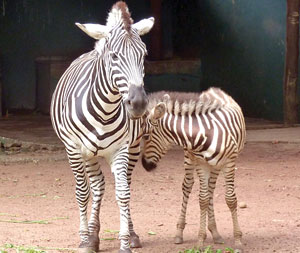Kids, have you visited the Zoo
during your school holidays..?
Then you would definitely have
spotted the newborn Zebra.
The baby zebra was born on August 10. At one month, she was already half of her mother’s height. She still likes to drink milk from her mother. But like most of you kids like to feed on the spicy food that your parents eat, this baby also likes to feed on grass like her mother and father do. Zebras live in large African grasslands and they are avid grazers.
She is so playful like a naughty child, running, hopping all over its spacious den located close to the entrance of the zoo. The keeper of the zebra says that the baby managed to get up on her feet just a few minutes after her birth.
Do you know that this is an
ability zebras have got for their
survival..?
These herbivores are hunted by many predators in the wild, including African Lions, Cheetahs, Leopards and Hyenas in their native ranges. So the newborn has to be ready to run for its life if needed. So the ability to stand up and run by one hour after birth is nature’s gift for their survival.
It is said that an adult zebra can run at a speed of 56 kilometres per hour. They also have a powerful kick that can cause serious injury to predators.
The zebra belongs to the Horse family. A baby zebra is called Foal, like the young horse below one year. The female babies are specifically called Filly, while males are called Colt. When a foal is born, the mother keeps all other zebras (even the members of her family) away from it for 2 or 3 days, until it learns to recognize her by sight, voice and smell according to expert zoologists. It is also said while all foals have a close association with their mothers, the male foals are also close to their fathers.
Zebras have a shiny black and white coat. Although they look alike to us, zoologists say that the strip pattern is unique to each individual like our fingerprints. Researchers can identify individual zebras by comparing patterns, stripe widths, colour and scars in the wild.
These black and white stripes are a form of camouflage called disruptive
colouration that breaks up the
outline of the body. Although the pattern is visible during daytime, at dawn or in the evening when their predators are most active, zebras look indistinct and may confuse predators by distorting true distance – not a bad ploy, isn’t it..!!
Does the Zebra have white
stripes on black coat or vice versa..? Previously it was believed that zebras were white animals with black stripes since some zebras have white underbellies. But research done in Embryo stages showed that the zebra's background colour is black and the stripes are white.
Zebras like horses are called by
different names depending
on their age.
Female Zebra - Mare
Male Zebra - Stallion
Baby Zebra - Foal
Young male - Colt
Young Female - Filly |


